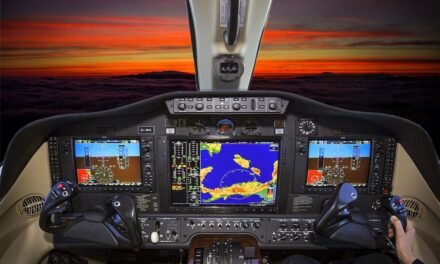Artificial Intelligence (AI) is playing an increasingly transformative role in spacecraft automation and decision-making, enhancing mission efficiency, enabling autonomous operations, and allowing spacecraft to navigate, analyze, and adapt to their environments with minimal human intervention. Here’s a breakdown of the key roles AI serves in modern spacecraft:
1. Autonomous Navigation
AI enables spacecraft to navigate independently, particularly in environments where communication delays or lack of real-time contact with Earth would make manual navigation impractical.
Terrain Navigation
- Function:
- AI processes data from onboard sensors and cameras to map and navigate planetary surfaces.
- Example:
- NASA’s Perseverance rover uses AI to autonomously avoid obstacles and select optimal paths on Mars, significantly reducing reliance on Earth-based commands.
Deep-Space Navigation
- Function:
- AI helps spacecraft determine their position and trajectory using celestial landmarks, star patterns, or pulsar timing.
- Example:
- NASA’s Deep Space 1 employed autonomous optical navigation, using onboard sensors and AI algorithms to guide its journey.
2. Autonomous Decision-Making
Spacecraft equipped with AI can make critical decisions in real-time without waiting for instructions from ground control.
Failure Detection and Recovery
- Function:
- AI systems monitor spacecraft health, detect anomalies, and take corrective action to avoid mission failures.
- Example:
- The Mars Reconnaissance Orbiter (MRO) uses AI to detect and manage hardware or software anomalies autonomously.
Dynamic Task Scheduling
- Function:
- AI optimizes the sequence of tasks based on changing conditions, such as resource availability or unexpected scientific opportunities.
- Example:
- The Earth Observing-1 (EO-1) satellite used AI to prioritize imaging tasks during natural disasters, such as volcanic eruptions or floods.
3. Data Processing and Analysis
AI allows spacecraft to process and analyze vast amounts of data onboard, reducing the need to transmit raw data to Earth, which is bandwidth-intensive.
Scientific Data Analysis
- Function:
- AI systems analyze data collected by sensors, identifying key patterns or anomalies in real time.
- Example:
- The James Webb Space Telescope uses AI-driven data pipelines to process large volumes of astronomical observations efficiently.
Image and Spectral Analysis
- Function:
- AI algorithms process images and spectra to identify features of interest, such as geological formations or signs of life.
- Example:
- AI aboard Mars rovers identifies potential scientific targets like mineral deposits or microbial habitats.
4. Robotics and Manipulation
AI powers robotic arms, rovers, and other tools for performing complex tasks autonomously in space or on planetary surfaces.
Sample Collection
- Function:
- AI guides robotic arms to collect and store samples from planetary surfaces or asteroids.
- Example:
- The OSIRIS-REx spacecraft used AI for precise navigation and sample collection from asteroid Bennu.
Maintenance and Assembly
- Function:
- AI assists in the autonomous repair, maintenance, or assembly of spacecraft components in orbit.
- Example:
- AI-guided robotic systems are being developed to assemble structures like telescopes in orbit.
5. Autonomous Science Operations
AI enables spacecraft to conduct scientific operations without waiting for Earth-based instructions.
Event Detection
- Function:
- AI detects transient phenomena, such as gamma-ray bursts or solar flares, and reorients instruments to capture data.
- Example:
- NASA’s Swift Observatory uses AI to autonomously detect and respond to gamma-ray bursts.
In-Situ Resource Utilization (ISRU)
- Function:
- AI identifies and processes local resources, such as water or minerals, for use in long-term missions.
- Future Potential:
- AI could support Mars colonization by managing automated mining and resource extraction systems.
6. Mission Planning and Optimization
AI streamlines mission planning, optimizing trajectories, schedules, and resource usage.
Trajectory Optimization
- Function:
- AI calculates the most efficient routes for spacecraft, saving fuel and time.
- Example:
- AI algorithms were used to optimize the complex trajectory of ESA’s Rosetta mission to comet 67P/Churyumov-Gerasimenko.
Resource Management
- Function:
- AI tracks and optimizes power, fuel, and thermal resources onboard spacecraft.
- Example:
- The International Space Station (ISS) uses AI to manage power distribution and life support systems efficiently.
7. Communication and Coordination
AI enhances the efficiency of data communication between spacecraft and ground control, and among spacecraft in constellations or swarms.
Data Compression
- Function:
- AI compresses data before transmission, conserving bandwidth.
- Example:
- AI techniques reduce the size of high-resolution images captured by satellites.
Inter-Satellite Coordination
- Function:
- AI enables satellites in constellations to coordinate tasks, such as Earth observation or communication coverage.
- Example:
- Systems like SpaceX’s Starlink use AI to manage satellite positioning and collision avoidance.
8. AI for Space Exploration Challenges
Handling Communication Delays
- In deep space missions, communication delays can range from minutes to hours, requiring AI systems to operate autonomously.
- Example:
- The Perseverance rover autonomously drives and makes decisions to explore Mars while awaiting delayed instructions from Earth.
Operating in Unpredictable Environments
- AI adapts to dynamic and unforeseen conditions, such as terrain hazards, dust storms, or equipment malfunctions.
- Example:
- AI systems on lunar landers assess landing zones in real time to avoid hazards.
Ensuring Reliability and Safety
- AI systems undergo extensive testing to ensure reliability, especially for missions involving human crew or high-value payloads.
- Example:
- AI assists in monitoring astronaut health and life support systems during long-duration missions.
9. Future Potential of AI in Spacecraft
AI-Powered Spacecraft
- Fully autonomous spacecraft capable of complex decision-making without human intervention.
- Example: Future missions to explore Europa or Titan may rely heavily on AI due to their challenging environments.
AI in Space Habitats
- AI will manage habitat systems, including air quality, water recycling, and waste management, for long-term missions to Mars or the Moon.
AI for Interstellar Missions
- AI could guide autonomous interstellar probes, such as Breakthrough Starshot, to analyze distant star systems and communicate findings back to Earth.
AI is a game-changer for spacecraft automation and decision-making, enhancing autonomy, efficiency, and adaptability in space exploration. From navigating distant worlds to analyzing scientific data and managing resources, AI enables missions that were previously infeasible due to human or technical limitations.













